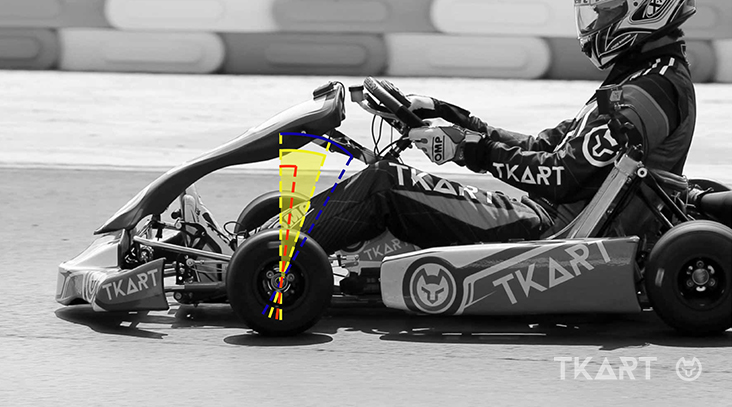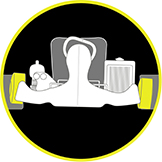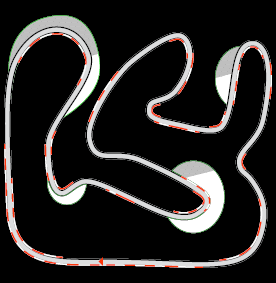CASTER AND BENDS
Getting down to details: as you steer to enter a corner, if caster is set high, the front outside wheel “unloads” (lifts) more and the front inside tire goes down lower, generating a braking effect (keep in mind that with Ackermann angles, steering has greater effect on the front inside than the front outside tire). So, the higher the caster, the greater the weight transfer to the front-end of the kart and thus the greater the vertical force that pushes down on the front inside tire, loading it to the ground. The result of all this is an increase in front-end grip.
REAR END
As weight is transferred to the front end, the rear inside tire gets “unloaded”, losing basically all grip and often coming off the ground. On the rear, all work through bends will be done by the outside tire. The kart will get enough grip to keep in line, but won’t be able to accelerate until some weight shifts back onto the inside tire. This explains why a high caster setting results in delayed acceleration coming out of corners. In part, though, delayed corner entry is also a consequence of tire behavio: the elevated load on the front end causes the front tires to have excessive grip and so to function as brakes as soon as the kart steers even slightly in acceleration.
TIRES AND GRIP
A greater caster angle causes front tires to work harder, so the surface tread becomes grainy. Vice versa, rear tires glide more easily, so the tread becomes very slick and smooth. Obviously, setting the caster as low as possible produces the opposite effect.
This said, on a track with low grip conditions and tight corners, caster will help corner entry, but the effect will have to be counter-balanced by an increase in rear-end grip.
Today, caster settings usually range from neutral to high, in order to keep good speed going into corners and be able to let off the brakes as late as possible coming out of them.
LOADED CASTER
The caster angle affects weight transfer through bends, with obvious consequences on grip.
A fully loaded caster (meaning, with the eccentric shifted backward to accentuate the pre-set angle formed by the Cs in the chassis) causes the maximum possible load transfer to the front tires and so better corner-entry performance. At the same time, it unloads the rear tires, especially the inside tire, causing it to lift off the ground. The result is more bite up front and less at the rear, which helps corner-entry, allowing to keep good speed, but reduces traction (and acceleration). Of course, a fully unloaded caster has the exact opposite effect.
 Exclusive Content
Exclusive Content



